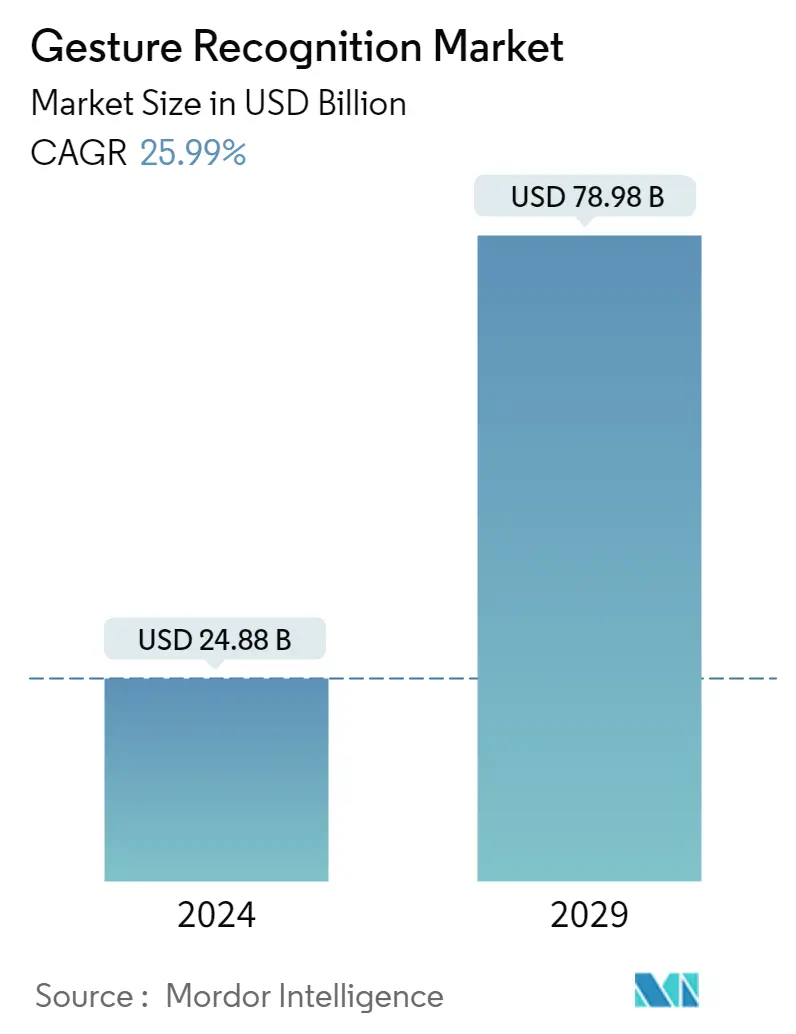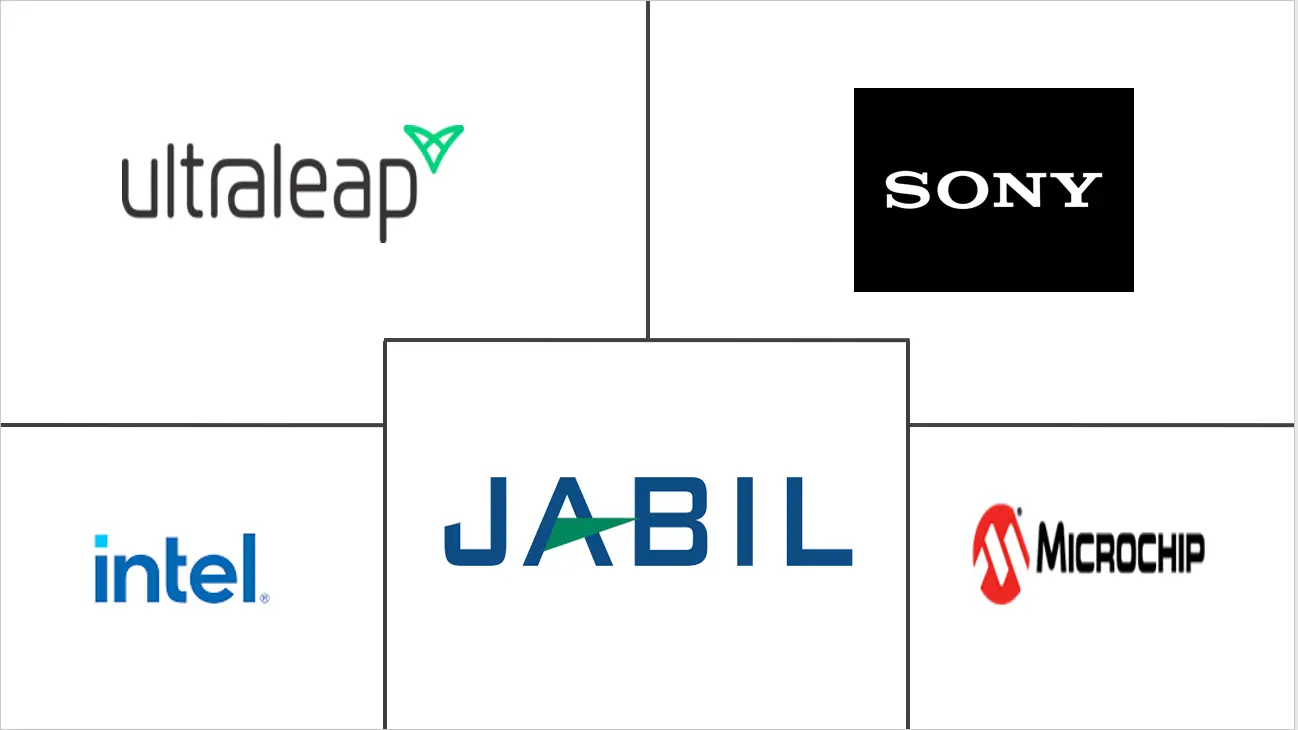Market Size of Gesture Recognition Industry

| Study Period | 2019 - 2029 |
| Market Size (2024) | USD 24.88 Billion |
| Market Size (2029) | USD 78.98 Billion |
| CAGR (2024 - 2029) | 25.99 % |
| Fastest Growing Market | Asia Pacific |
| Largest Market | North America |
Major Players
*Disclaimer: Major Players sorted in no particular order |
Need a report that reflects how COVID-19 has impacted this market and its growth?
Gesture Recognition Market Analysis
The Gesture Recognition Market size is estimated at USD 24.88 billion in 2024, and is expected to reach USD 78.98 billion by 2029, growing at a CAGR of 25.99% during the forecast period (2024-2029).
- The development of artificial intelligence (AI) has given rise to gesture-recognition-based devices. Moreover, the recent technological advancements in the field of gesture recognition technology, coupled with increasing adoption among end-user industries, are analyzed to drive the market in the coming years.
- Gesture recognition technology is being increasingly implemented for human-device interaction due to an increased acceptance of gesture-enabled electronic devices across various industry verticals, for example, switching through television channels or radio stations. The use of gesture recognition is increasing in various sectors.
- One recent development in this area is the interaction of humans with machines by using hand gesture recognition. Another development is the use of hand gesture recognition to control computer applications.
- With continuous technological developments, the companies in the market studied have been manufacturing products incorporated with new and innovative features. Omron Corporation has developed gesture recognition technology by simultaneously recognizing the position, shape, and motion of a person's hand or finger by referencing a camera-recorded image.
- Moreover, gesture recognition technology is gaining substantial prominence among consumers and original equipment manufacturers due to increased user convenience when handling various electronic products. Manufacturers worldwide are focusing on innovation to add gesture recognition features in different consumer electronics, which has improved safety, reliability, and convenience. Further, the demand for touchless gesture recognition is governed by the increasing demand for superior user experience, ease of use, and rising digitization across several sectors.
- A gesture recognition application system comprises several key hardware and software components, all of which must be tightly integrated to provide a compelling user experience. Moreover, specialized algorithms subsequently interpret the processed data, translating the movements into actionable commands that a computer can understand. Subsequently, an application integrates these actionable commands with user feedback, which must be natural as well as engaging. Adding to the overall complexity of the solution, the algorithms and applications are increasingly being implemented on embedded systems, with limited processing, storage, and other resources.
- Additionally, the integration of advanced technologies such as artificial intelligence and machine learning in the gesture recognition ecosystem is further expanding the studied market. The proliferation of AI and ML technologies is causing paradigm shifts in Gesture recognition by offering a spectrum of feature-enriching applications in healthcare delivery, smart navigation, consumer electronics, augmented reality gaming, automation of homes, live video streaming, and virtual shopping.

